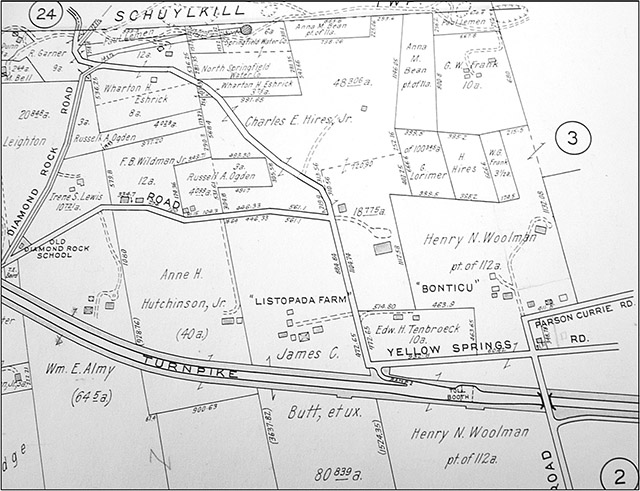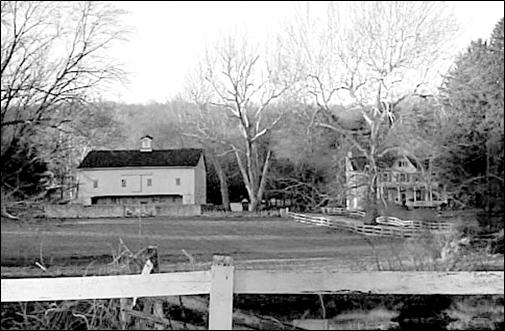|
Home : Quarterly Archives : Volume 42 |
||||||||||||||
Tredyffrin Easttown Historical Society |
||||||||||||||
|
Source: Fall 2005 Volume 42 Number 4, Pages 110–115 Growing up on Yellow Springs Road
Around 1900 my grandfather, Philip Ten Brook—the spelling was "Americanized" for business reasons by his father, but my father changed it back—owned a farm in Tredyffrin Township, Chester County. He called it "Bonticu Farm." I was told this was the name of the ship that brought the original Ten Broecks to America, but later found this was not true. The farm was located where Mill Road met Yellow Springs Road, about two miles west of the Knox covered bridge in Valley Forge. My grandfather was not a farmer, but used the farm as a summer get-away. He rented it out to tenant farmers and lived in the house. In the late 1920's my father, Edward, purchased ten acres in the southwest corner, built his home there and brought his parents to live with him.
Edw. H. Tenbroeck's property, “Bonticu Farm,” as well as several other local properties and landmarks are shown in Plate 4, “Parts of Tredyffrin & East Whiteland Twps.,” of volume two of the Property Atlas of the Main Line published by the Franklin Survey Company in 1950. The Woolmans bought Bonticu Farm. They built a brand new house on my grandfather's farm up near the woods. I remember as it was being built that it had two staircases—something I had never before seen. The Woolmans were Quakers—not “Thee” and “Thou” Quakers, but very gentle people. They were the people who created and maintained the Horseshoe Trail, a hiking and riding trail running from Valley Forge to the Manada Gap near Harrisburg. It ran along the ridge above the north side of our property where our spring was. There were many of the old iron ore pits and two large sandstone quarries there. Just north of our property was a large pasture belonging to the Woolmans that we called the "Back Field." Across Yellow Springs Road from our house was Listopada Farm owned by James Butt. He owned a successful car dealership in Philadelphia. When they bought the farm their dog killed several of our chickens, which started our relationship off on the wrong foot. They raised racehorses as a hobby.
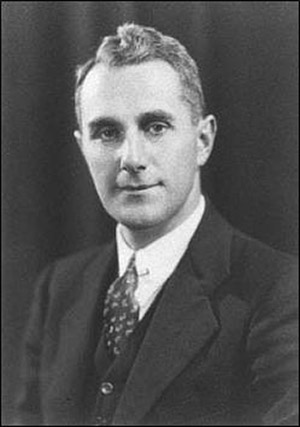 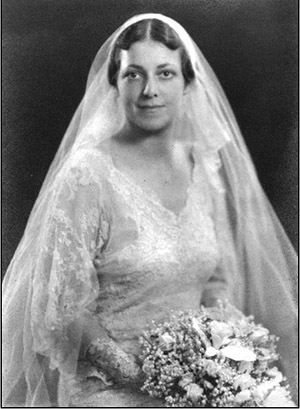 Upper: Edwin TenBroeck in 1932. Lower: Molly Atmore in 1933. Photographs courtesy of the author. Father built the house, which he called “Hawthorne Hill,” during the Depression era and I think it cost about $13,000. In 1933, my father married my mother, Molly Atmore, and she moved in with Dad and his parents. It had a detached two-car garage with two stable stalls. A coal furnace using a single-pipe steam system heated the house. Steam was piped through the house to the radiators where it condensed and the condensate ran back to the boiler through the same pipe. It was a very efficient system, both to install and to operate. During the war the availability of coal was an “iffy” proposition so Dad built coal bins all over the basement. Our coal was delivered by the Clarence Staats Coal Company of Malvern. In addition to the electric stove in the kitchen we had a large coal stove, which my grandmother preferred to use. I remember how well this heated the kitchen when electric power went out—which it did quite often—and we used it to cook our meals. Later, when this stove was removed, we used the dining room fireplace to cook our meals during power outages. 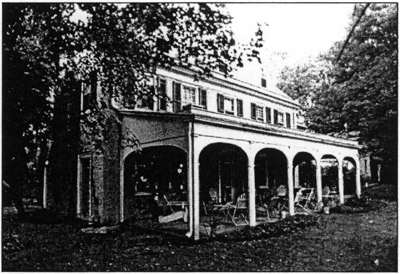
Top: Edwin TenBroeck in 1932. Middle: Molly Atmore in 1933. Bottom: Hawthorne Hill c.1980. Photograph courtesy of the author. Our other major appliances were a refrigerator, wringer washer and a clothesline. Later on we got a mangle—a rotary iron used for flat linens such as tablecloths, sheets, napkins, hankies, etc. We did have an icebox but I don't remember it ever having ice in it. It was filled mostly with dog food. Although there was an Acme market in Paoli, we also had local purveyors. Our milk was left on the back porch by Nelson's Dairies of Norristown and I remember how the cold weather made the milk expand and push the cream out of the top of the bottle where I could break it off and have a real creamsicle! We also had a weekly visit from a man who sold vegetables from a battered old truck. Our water supply came from a spring on the hill about a half-mile above our house. It was the same spring that fed the rest of my grandfather's farm. There was no need for a pump as gravity supplied about 60 lbs. of pressure which was more than enough to provide water to the third floor. When it got very cold it was necessary to keep a small trickle flowing at all times so the pipeline wouldn't freeze. In the 1960s it did freeze and we were without water for about three months. We carried water from the neighbors for cooking, washing, and flushing toilets and took showers at friends' houses. As soon as the weather turned warm, Dad had a well dug in the yard. We had a septic system that worked very well. I only once remember it having to be pumped. To burn our trash we had a circular brick structure about four feet across and about two feet high in the back yard behind the garage. The non-combustibles were carried in a wheelbarrow down the driveway to the southwest corner of the property. There was a deep hole there which—we were told— was where they had mined a low-grade iron ore for the forge at Valley Forge. I have no idea if this was true but it is very possible. On our property, about halfway between our house and Bonticu Farm, was an old stone house we called the "Egg House." It was presumed to have been a storehouse for vegetables. There are those who said it was the home of the mine-workers who dug the iron ore and took it to Valley Forge, but I never placed too much belief in that. Originally, it had no plumbing or heating. We occasionally rented it out as a summer "get-away." In the mid 1940s we rented it to Alfredo and Alda Krause and their sons Bruce and Douglas. Instead of paying rent they agreed to install plumbing and heating in order to make it livable year-round. They did so and lived there for over 40 years and were literally our closest friends in more ways than just proximity. We always had two cars but never new ones. The one I remember best was a 1934 Chevrolet Phaeton. It was my mother's before her marriage. I don't know what color it originally was but we painted it blue and called it “The Blue Bathtub.” It had canvas windows, that you put in if you needed weatherproofing, and mice in the upholstery. But it got Dad to Paoli Station without fail. Dad said that the only car more capable of negotiating snow on North Valley Road was Bill Nassau's Willys. We also had an old Packard sedan and a 1938 Chevrolet sedan in which I learned to drive. Speaking of cars, we always patronized Cooksey's gas station in Paoli. This was because he sold Atlantic Refining gas and since Dad worked for Atlantic Refining he got a discount. For car repairs we used a garage in Berwyn occasionally, but mainly we used Jack Wilson's garage on Spring Street in Paoli.
A year after my father married my mother in 1933, I was born in Philadelphia's First Hospital, then called the "Lying in Hospital." I suffered from ear problems at an early age and was taken to Dr. Aiken in Berwyn. At the age of four I had my tonsils removed at the Chester County Hospital in West Chester. I remember my father rubbing my back and telling me stories. My favorite, and the only one I can remember, was the one of a Pennsylvania Dutch barn-raising. I am the oldest of my parent's 4 children. My sister Mary was born in 1938, brother Edward (Ted) in 1941, and sister Nancy in 1943. Dad was quite an outdoorsman. Fishing and hunting were very important to him since he worked in an office all week. I remember him teaching me that if I sat very still in the woods the squirrels would come . . . and that rabbits usually ran in a circle. If I was lucky we would have squirrel potpie and rabbit stew. Squirrels and rabbits were easy to skin and clean but I hated plucking pheasants. But they were so good especially when marinated in light cream rather than roasted. My father's mother was a very strict Presbyterian. We couldn't play cards on Sundays. We also had a prayer service every Sunday evening through which I tried to sleep! All this passed when she did. 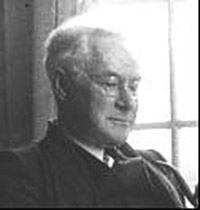
Grandfather Philip TenBroeck c. 1940. Photograph courtesy of the author. I don't remember much about my grandfather. He died when I was only nine. I remember him smoking his pipe and reading a lot. I also remember him giving me candy when my mother had washed my mouth with soap for saying something I shouldn't have said! My mother's father died before I was born but I remember her mother very well. She lived at 314 Louella Avenue in Wayne and we went there often, usually for Sunday dinner. In fact, we lived there during the winter the pipes froze in our house. As it was wartime we didn't get away for vacations much. My mother's family often aestivated*—in warm weather—in their summer home on “Twin Lakes” in northwestern Connecticut, so we went there a few times, but mostly after the war ended. *Aestivate is defined as "to pass the summer, especially in a state of dormancy" by The American Heritage Dictionary of the English Language.
Critters were a very important part of our homestead. Every spring Dad bought a shoat that we installed in a pen in the woods. Said pig was our garbage disposal but it required supplementary feeding of a mixture of mash and water, which we children had to mix and carry to the pigpen in a bucket every day. It was heavy and invariably spilled on us. Fortunately for us, when fall came the pig became ham and bacon for our winter breakfasts. We sent him to be butchered by Mr. Titter who lived at “The Boot.” I think that was near West Chester. Chickens were always about, both for eggs and meat. Dad built a chicken yard on the east side of the stable for them. We once had two Muscovy ducks but I don't know why. There was no pond for them. When I was about eight my parents surprised me by giving me a Welsh pony. Her name was Betsy and she and I did not get along very well. We fenced off a "pasture" for her on the south side of the stable and she was very reluctant to be removed from it to be ridden. I remember her kicking me often and I retaliated by throwing corncobs at her. I don't remember what happened to her. Several years later, when I was in my teens, someone offered my father a horse. In spite of having no place to stable it, he accepted. George was a rangy "hunter" of unimpressive confirmation and unknown age. We secured a stall for him in a carriage barn at [H. Lea] Hudson's place about a mile down Yellow Springs Road toward Valley Forge that is adjacent to Stirling's Headquarters. I was never a horseman and didn't ride George often. I never had enough confidence in George or myself to jump more than a two-rail fence. I remember my first horse show at Tindle's farm on Valley Creek—now part of Valley Forge Park. George was very feisty and we had a long time to wait before my class was called. I finally got him calmed down but, when I was called, he was so calm he refused the jump every time. I was mortified! Some time after that I went down to ride George and he wasn't in his stall. They told me he had died. I was overcome with lack of remorse! We had many other critters. We had two goats, rabbits, many dogs—mostly hunting dogs, setters and a pointer, a skunk which I caught in the field one day, and the usual house pets such as cats, hamsters, mice, and gerbils. Some of the hamsters and mice escaped and lived undiscovered in the attic insulation. Being nervous about snakes, I captured a garter snake and studied it in a terrarium in my bedroom. I also had a baby possum, which had the silkiest fur, but I didn't realize how much and how often it had to be fed and it expired for want of sustenance. When I was about 10 years old I became entrepreneurial. The chickens were gone and I decided to convert the chicken coop to a pigeon cote. I had read in some magazine that one could raise squabs that many restaurants would buy. I bought and raised about 20 pigeons and sold not one! Marketing was not my forte. Eventually I either gave them away or let them go.
The large pasture north of our property owned by the Woolmans—the “Back Field”—was where we held all our neighborhood baseball and football games. Our parents said we spent more time arguing than playing. In the center there was a low place, which would fill with rainwater and then freeze over. Once I was paddling around that pond in a small boat and found myself confronted by the steers that were pastured there. Fortunately, my dog, Lassie, came down and ran the steers off so I could escape. Hank Woolman and I prowled the areas to the north up where the spring and the old ore pits and sandstone quarries were and, at one time, even mapped them. Hank's bedroom and mine had a line-of-sight and we arranged a Morse code communication system using flashing lights. In the field below the barn on Bonticu Farm there was a stream. Hank Woolman and I enjoyed playing in it, making dams, locks, harbors, etc. In the summer of 1945 my sister and I were playing there and all of a sudden we heard all the fire sirens blowing. We ran home and met my mother, who was in tears, at the door. She cried, "The war is over!" That evening, after dinner, we all went to the Church of the Good Samaritan in Paoli for a service of thanksgiving. Later my parents went into Philadelphia to celebrate which surprised my mother since father had just gotten home from Philadelphia. She later found out that at the end of World War I, my father had been on duty at Fort Monroe, Virginia and had not been able to celebrate at that time. When it was hot and we wanted to swim we either were driven or rode our bikes down to the Lewis home on LeBoutillier Road where we swam in the Valley Creek pond behind the dam at Mill Road. When I was very young I had a woolen bathing suit that I hated because it itched; but I learned to swim in it. Because of my strict Presbyterian grandmother, we couldn't play cards or parlor games, or go to movies on Sundays. Our favorite parlor games were Hearts, Old Maids, Go Fish, Parcheesi, and Monopoly. When I was about ten or so I think my mother decided I should get a job— read: get out from under her foot. She inveigled her brother-in-law, David Wilson, to hire me for the great wage of 50 cents per day. Actually, it worked out well. I was out of her hair—and into Dave's. I was of some meager help to him—"Craig, hand me that wrench, please"—and I got to drive the tractor. He had two John Deere tractors, a Model A and a GP. I preferred the Model A because it was easier to steer but I usually got the GP. During the war when gas rationing came, Dave converted these tractors to run on kerosene. This was not a big problem as they had only two cylinders but they had to be started on gasoline, which was done by turning a large flywheel. When he had pigs to be butchered, we took them to a farm east of King of Prussia until it was replaced by a drive-in movie and later by the King of Prussia mall. I loved to go to Listopada Farm and help the groom, Hunter King, with the horses, and the farmer, Walter Brown, with the haying and other farm chores. Walter and his wife were from West Virginia and were really neat, colorful, salt-of-the-earth people. I loved haying time because, being too small to throw the hay bales on the truck, I was allowed to drive it. At age twelve, this was an exciting privilege and I got pretty good at backing it into the barn. As I got older and bigger, I was assigned to stack the bales on the truck instead of driving it – alas!
My first exposure to structured education was at the Charlestown PlaySchool on Charlestown Road south of Phoenixville. They had a brass pole you could slide down that I really loved, but the stairs to it were usually closed and I wasn't able to shinny up the pole to slide down like the others could. When I was 14 I had a dancing class in the same place where I learned the box step and mortification by the opposite sex. My sister and I attended the Paoli Elementary School. To get there we rode the big yellow school bus and to get to the bus stop we had to walk about a mile to North Valley Road. I remember that Peter Esherick, Wharton's son, also used that bus stop for a while. One of the bus drivers was George Grey, who went on to form Grey Brother's septic tank service. Coming back home at the end of the day, I remember dragging my book bag behind me and trying to look as tired as I could in the hope that a passing motorist would give me a lift. Later on the bus came down Yellow Springs Road and we only had to get to the bottom of our driveway. This was during the Second World War. I remember rubber drives and steel drives—where I donated my uncle's golf clubs without his knowledge, a milkweed collection for making lifejackets, duck-and-cover drills in case of air raids, and going to the hallway and sitting on the floor when the fire siren went off. We were told about the Nazis but I didn't know what they were. I envisioned fiendish monsters with bloody teeth. We had a Scottish maintenance man who taught us how to play soccer. We didn't have uniforms and it was intramural, so he gave us sashes to differentiate the sides. I went on to play and enjoy soccer in high school. I remember some of my teachers at the Paoli School. Ms. Savage was my kindergarten teacher. I was the champion airplane drawer in a contest she had. My first grade teacher was Miss Crook and the classroom was in the southwest corner of the building. My second grade teacher was Miss DeWeese. Her father was a one-armed miller who owned a mill on Mill Road by Valley Creek in Berwyn. My third grade teacher was an ex-WAC, Ms. Hayman, with whom I had a real problem. A classmate of mine accused me of putting pepper in her eyes, something I would not have done because I had a crush on her. The teacher brought me to the front of the class and conducted an inquisition requiring everyone to say what they saw until the pressure on me was so high I accused a friend of mine just to get the pressure off. Miss Hoffman was my fourth grade teacher. My fifth grade teacher's name might have been Miss Braun. Mr. Diehl Mateer was the principal and the sixth grade teacher. All female teachers at that time were called “Old Lady so-and-so” no matter their age or marital status. After elementary school I went to The Episcopal Academy. I began in the “First Form” in 1946 and the next year matriculated to the “Upper School.” It was a wonderful school and my best friend, Bill Latimer went there as did my neighbor, Hank Woolman.
The Back Field is now Rochambeau Drive and has six houses. Our house has been extensively changed to the point where I hate to drive by it. It is difficult to see, since the present owner has built high berms to replace the trees he took down and found out how noisy the Turnpike was. The Egg House is in shambles and I don't think the walls will last much longer, now that the roof is gone. The carriage barn where I stabled George burned down many years ago and the Hudsons moved to the Lewis's house on LeBoutillier Road. The fields where I used to bale hay and ride my horse are now a large housing developments. All is not bad though. My grandfather's house and barn on Bonticu Farm are still there although they are building houses all around it. Listopada Farm was sold about seven years ago and I was afraid they would develop it, since the Turnpike cut the farm in two. But the owner has pastured a lot of horses and it looks like it will stay for a while. And Paoli Elementary School is now the Delaware Valley Friends School. Growing up on Yellow Springs Road was a memorable time in my life. I am sorry that my children and grandchildren will never be able to have such a wonderful experience.
Philip Ten Broeck's original “Bonticu Farm” as it appeared in the fall of 2000. The location is on the north side of Yellow Springs Road where it meets Mill Road. Photograph by Craig A. TenBroeck. |
||||||||||||||
